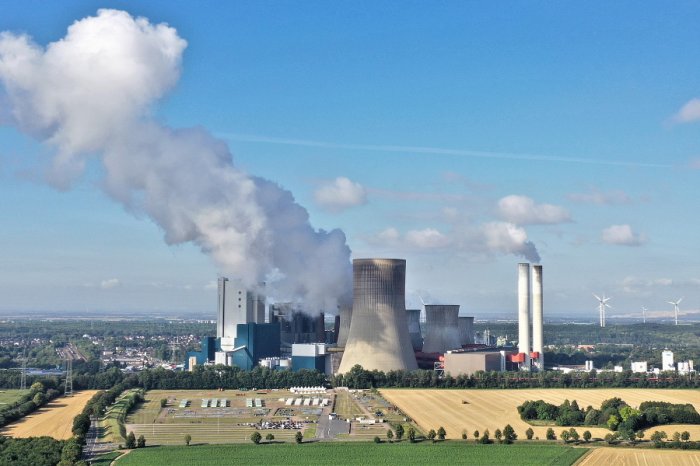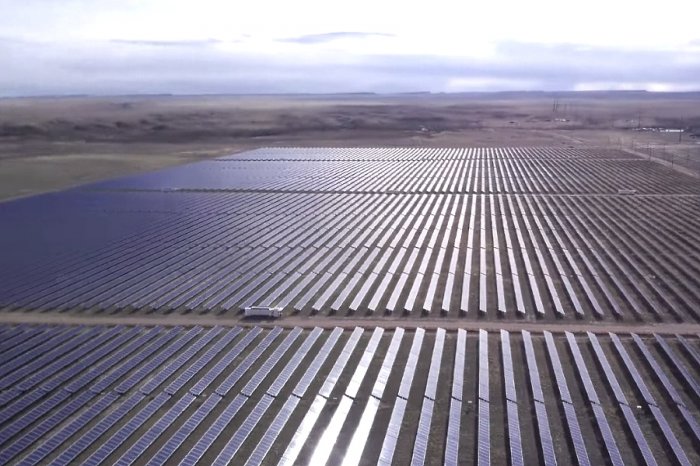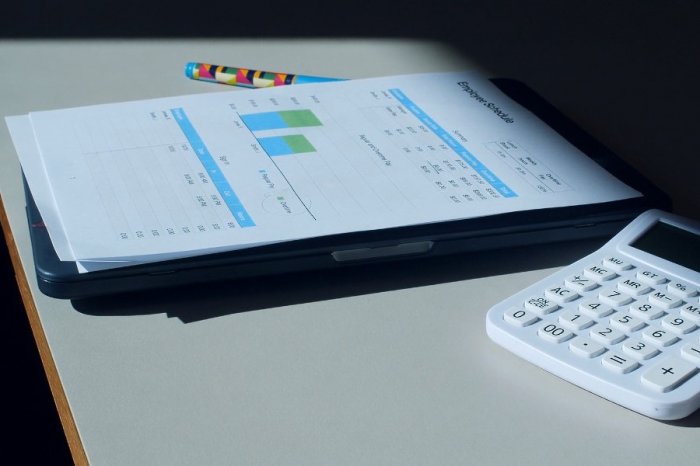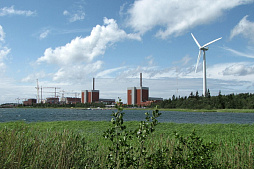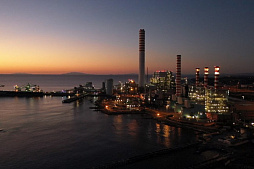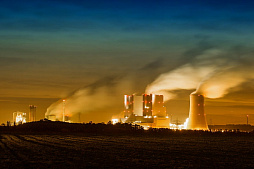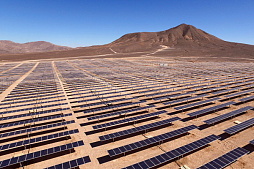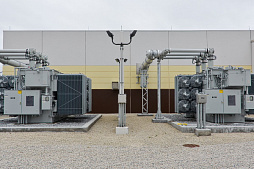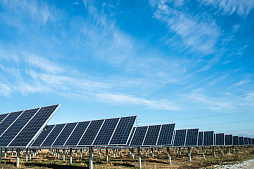To consider an application for financing, fill out the form and send it to us by e-mail along with the project brief, or contact our experts
These projects are actively developing in Russia and the CIS, the EU, the USA, Latin America, Africa, the Middle East, India and East Asia.
Fossil fuel power plants (natural gas, oil and coal) continue to dominate the global energy mix.
Moreover, the construction of new biomass power plants has been included in the list of national priorities for many countries.
In this context, thermal power plant project finance becomes extremely important.
The use of project finance in various sectors of the world economy has been growing over the past 10 years.
In 2012, project finance in the world amounted to just over $ 198 billion, but by the end of 2015 the value of these projects exceeded $ 277 billion and continued to grow.
Project finance is used in thermal energy, renewable energy sector, infrastructure, transport and hydrocarbon production.
The role of this mechanism is important for the petrochemical industry, water supply and mining industry.
Given the increasing technical complexity of equipment and strict environmental standards, the construction of new thermal power plants today requires large investment costs.
Project finance helps solve this problem by providing several principal benefits for sponsors:
• Off-balance sheet accounting.
• Improving overall project efficiency.
• Attracting funding on the most favorable terms.
• Minimizing the project's impact on sponsors' creditworthiness.
• Optimizing taxes in the best interests of the participants.
• Rational distribution of project risks, etc.
The International company LBFL offers comprehensive financial services, including investments for the construction of energy facilities around the world.
We also perform financial modeling and advise clients at any stage of the project.
Our partners include the largest banks in Spain and other European countries, investment funds, venture capital firms, construction companies and electrical equipment manufacturers from all over the world.
We are ready to find the optimal financial or technical solution that will satisfy your needs and become the basis for building a successful and sustainable business.
Conventional (corporate) financing model in the thermal power sector
Corporate finance usually includes loans based on the results of the company's current business activities.When making a decision, lenders take into account the impact of planned investment projects on this activity.
In thermal power plant conventional finance, the borrower displays the investment project on the balance sheet and is fully responsible to the lender with all assets. The loan is repayable according to the agreed schedule and the maturity depends on the company's projected cash flows.
Typically, the maturity of a conventional bank loan is shorter than thermal power plant project finance models and rarely exceeds 7-8 years. The cost of borrowed funds depends on the financing period, as well as on the condition of the borrowing company and loan security.
In general, banks consider this financing option to be less risky than project finance, and therefore cheaper and easier to organize.
Corporate finance allows flexible use of borrowed funds with minor restrictions on the company's activities.
In the case of long-term financing, banks use additional contractual clauses that allow controlling credit risk and monitoring the borrower's activities.
For example, this may be a restriction on new loans, the provision of a guarantee, etc.
Among the key elements of thermal power project conventional finance, experts name special provisions that determine the acceptable level of the company's financial indicators. The net debt / EBITDA ratio is often used, where debt refers to the company's loan commitments and EBITDA refers to operating income before taxes and depreciation.
The ceilings for these indicators are determined based on financial forecasts, but in the case of debt / EBITDA ratios, the cap is usually less than 3.0. This means that before the loan maturity date, the value of the company's debt less available cash should not exceed three times the operating profit before depreciation.
Given the ease of obtaining corporate finance, the low cost, and the relatively low level of debt among thermal power companies, they usually prefer this type of financing.
Another option is a bridging loan.
This assumes a short-term loan until long-term financing is organized as a result of the completion of another investment project.
Investments involve additional risks, so banks seek broader recourse and prefer to work with clients with a strong market position. Given the high investment costs of building thermal power plants and the capital intensity of such projects, many companies are looking for alternative sources of funds.

Thermal power plant project finance: benefits
Historically, the first deal, later called project finance, was struck in the 1930s in Texas (USA) to create an oil company.In the last decades of the twentieth century, project finance has been widely used in the energy, telecommunications sector and infrastructure projects.
Project finance is based on a system of interconnected participants, formed for the implementation of a specific project. The source of settlement of liabilities and income are the cash flows generated by the project, and its assets are used as collateral.
Thermal power plant project finance differs significantly from other methods of financing business activities and is characterized by a number of features.
Table: key features of project finance for the construction of a thermal power plant.
| Features | Detailed description |
| Creation of an independent legal entity called SPV (Special Purpose Vehicle) | When implementing an investment project, a project company is created, which attracts the required financial, material and human resources for the construction of thermal power plants. SPV solves financial issues with lenders and investors through the cash flows generated by a specific project. |
| Limited possibility of debt recovery in case of project failure | The project company does not have significant assets to ensure the return on borrowed funds required for the initial phase of construction of the thermal power plant. The repayment of debts is guaranteed only by the cash flow generated during the operation of the TPP. |
| Variety of used financial instruments | Project finance involves the use of different tools, methods and models with the conclusion of contracts with different contractors for the successful and complete implementation of a particular project. |
| Minimum initial contribution of the project sponsor | The thermal power plant project finance is characterized by a very high ratio of borrowed capital to equity (high financial leverage), since the relative share of borrowed funds can reach 90% of the total project cost. |
| Long debt maturity | This model assumes a limited useful life of the investment project, which is determined by the duration of contracts or licenses obtained, fuel availability, and other factors. |
This financing model is chosen to reduce the risks for the project sponsor (initiator, owner), especially with a large number of investors.
This simplifies the distribution of duties and responsibilities among the participants and, thanks to the transparency of the model, creates opportunities for effective management of the financial risks of the project.
The project finance model is based on the assumption that the debt will be fully repaid from the funds received from the project, without recourse or with limited recourse. It is common practice to use an SPV, the shareholders of which are the project's investors.
The following parties are involved in thermal power plant project finance:
• Sponsors of the project. These are entities that invest their own or borrowed capital in the construction of a thermal power plant, taking on the associated risks. This includes ministries, state-owned enterprises, financial institutions, private companies and individuals. Sponsors independently determine the amount and timing of the allocation of financial resources provided for the implementation of the project.
• Lenders. These project participants provide loans to finance equipment purchases and on-site work. Most often these are national, foreign or international banking and financial institutions (for example, the World Bank, European Bank for Reconstruction and Development, European Investment Bank).
• Contractors. The contractors are persons performing various types of activities under contracts concluded with the project company. They carry out construction works, the supply and installation of boilers, generators, transformers and other equipment.
• Consultants. These are individuals or companies providing engineering, design, legal, financial and other consulting services.
• Consumers. The consumer group includes individuals and legal entities using products and services created as part of an investment project. The initiators of the project can act as consumers themselves, but if they are independent entities, it is necessary to regulate their relationship with the project company through a contract.
• Insurance Company. This party insures the property of the project company and compensates for losses incurred as a result of various insured events.
• Suppliers. Manufacturers and suppliers provide machinery, equipment and materials required for the construction of a TPP, as well as raw materials and spare parts required for the operation of the facility.
• Construction company. An engineering and construction company develops an investment site in accordance with the terms of the contract and technical documentation.
• Government agencies. The authorities can enter into licensing and concession agreements with the project company, supervise construction during the construction of a thermal power plant, provide tax incentives or other measures to facilitate the development of the project.
In the past decades, the project finance model has rarely been used in the European energy sector and has mainly been implemented to finance wind or solar power plants.
Meanwhile, it can also be useful for financing the construction of gas storage facilities, any power unit and a piece of infrastructure that is a separate business entity.
As the indebtedness of thermal power industry entities grows, this financial model will be used more and more often. Nowadays, project finance is more relevant for small energy companies that have been hit by the growth of renewable energy sources.
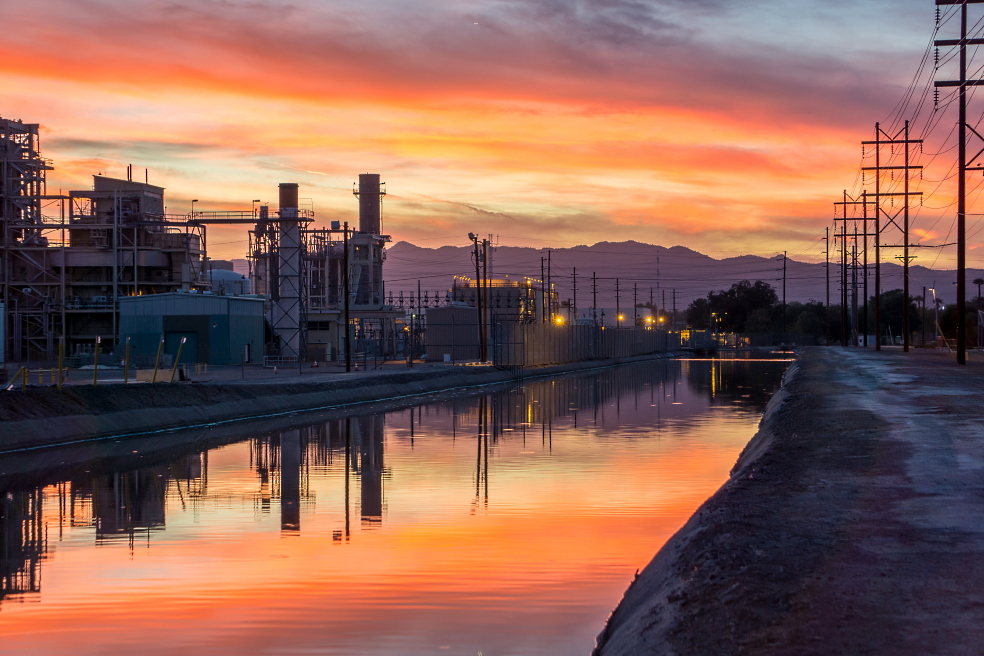
The choice of a financing model is based on a financial strategy that covers the activities of a particular company.
The package of documents is usually prepared in cooperation with a professional financial advisor.
SWIG provides a full range of financial services, including the development of an optimal financing model for energy projects.
In the case of project finance, both the investor and the banks cooperate with specialized companies that conduct due diligence. This analysis includes environmental and market audits (a thermal power plant project is always subject to market risk), as well as an audit of the financial model, insurance and legal audits.
It is also important that the project is implemented on the basis of proven and safe technologies. If the projects are technically complex, financial institutions must additionally perform a technical audit of the project.
When structuring contractual relations, organized according to the project finance formula, risks arising at the construction stage and at the stage of operation of a thermal power plant are shared between the investor, the general contractor and financial institutions.
When analyzing a project, banks assess its risk taking into account numerous objective factors:
• Structure and terms of contracts for the purchase of electricity and heat.
• Compliance of the validity period of contracts for the purchase of electricity and heat with the financing period, consumer reliability and market risks.
• The structure and terms of contracts for the supply of fuel for a thermal power plant.
• The main provisions of the EPC contract with the general contractor, including performance guarantees and proposed fines, as well as the reliability of the contractor, its financial condition and experience in implementing similar energy projects.
• Power unit technology and experience of its application in similar projects.
• Location of the thermal power plant and access to the infrastructure for the transmission of electricity and heat to consumers at minimal cost.
• Environmental aspects of the investment project, its potential impact on the environment, health and well-being of the local community.
• Legal aspects of the project and the possibility of obtaining the necessary permits.
• Experience of the project investor in the implementation of similar projects.
Project finance for the construction of a thermal power plant can be obtained without recourse or with limited recourse to the borrower, as well as in the form of an obligation to cover unplanned costs.
Other forms of investor support are also practiced, especially at the stage of engineering design and construction.
Depending on the risks of the project, at the initial stage, the required level of equity capital is determined, which for most companies ranges from 20% to 40% of the planned investment costs.
Thanks to the use of innovative financial models, SWIG is ready to offer its clients project finance options that cover up to 90% of the project cost.
The collateral in project finance is the property of the SPV, that is, the assets of the project company that implements the investment.
Financial institutions also enter into direct contracts with key project participants, which allows them to take control of the SPV and continue the project in the event that partners fail to fulfill their obligations.
The financial documentation for project finance is stricter and more complete than for conventional finance models. Unlike corporate finance, project finance focuses primarily on the cash flows generated by the project, such as projected or average debt coverage ratios.
Thus, the key step in organizing project finance for the construction of a thermal power plant is to prepare a clear investment model.
The difficulties in building financial models in energy projects are due to the following factors:
• Possible rise in prices for fossil fuels, which, together with the reduction in the cost of construction technologies for wind and solar power plants, may negatively affect the competitiveness of the project as a whole.
• Uncertainty about costs associated with carbon dioxide emissions and non-compliance with mandatory local emission reduction regulations. For example, the need to install expensive carbon capture and storage (CCS) equipment, which negatively affects economic performance.
• An unforeseen change in thermal energy legislation with a particular focus on changes in the support system and environmental standards. In general, the uncertainty of regulators' actions creates problems for various energy projects.
• The risk associated with the need to conclude long-term contracts for the supply of fuel along with short-term contracts for the purchase of electricity.
Project finance usually allows the debt maturity to be extended to 10-15 years or more, with debt repayment usually matched to the cash flows generated by the project.
Our partner banks are ready to provide project finance for the construction of TPPs on flexible terms.
Acting as your advisor, SWIG is ready to develop optimal financial models to attract funding through European banks and investment funds.
Together with our partners, we have successfully implemented dozens of projects in many countries around the world. Today, our experience and network of business contacts will serve the success and prosperity of your energy business.
If you are interested in thermal power plant project finance, read our offer and contact our representatives for more information.





